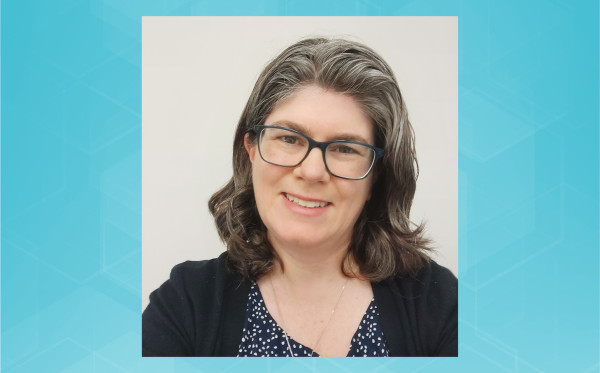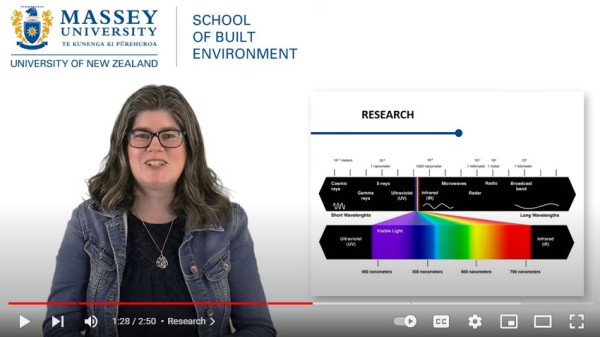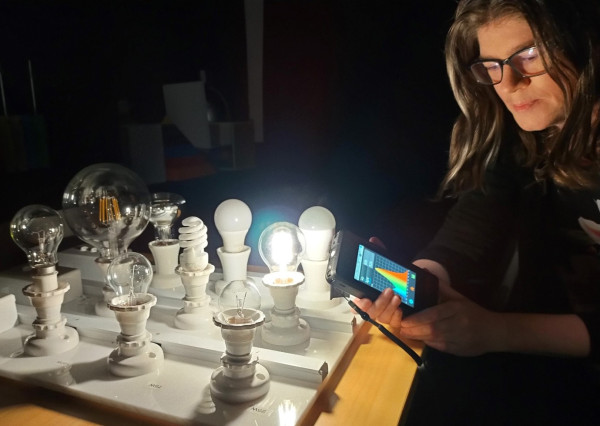Influencing standards and students with Susan Mander
Committee member Susan Mander shows us how universities play an integral part in bringing latest research to standards development.

Lighting expert and committee member Susan Mander
We often think of standards from a practical application perspective and how they influence the way we do things or meet compliance. Major users of standards are the universities, academics, and students across New Zealand, integrating standards into their learning and teaching practice.
Bringing the academic angle
One such academic is Massey University’s Susan Mander, electrical engineer, NZ Education Chair of the Illuminating Engineering Society of Australia and New Zealand (IESANZ), and lecturer leading the university’s IESANZ-accredited lighting programme.
Susan doesn’t just teach the application of standards to her lighting design students; she is also actively involved in their development as a committee member. Her latest contribution was to the recently published NZS 20086 – Light and lighting – Energy performance of lighting in buildings.
‘I teach about standards all the time. They’re not in the background to be checked later; we regularly refer to them as they are at the forefront of what we do as lighting designers. Through my teaching, I can identify areas that are ambiguous or hard to understand. For example, students often struggled to understand the calculations in NZS 4243.2:2007 – Energy efficiency - Large buildings - Part 2: Lighting, so being involved in revising that standard meant I could include this bigger picture view and help with the rewrite. There’s a sense of satisfaction and pride in seeing your contribution integrated into a standard.

Susan's Massey lighting course explainer video
Lighting - School of Built Environment | Massey University [YouTube](external link)
Tapping into global research
‘Academics can bring a lot to standards development, as we are experts in our scientific fields and have the latest worldwide information at our fingertips. We can access international perspectives through research or professional networks and use our knowledge to keep standards up to date.
‘The industry applies standards, so we have a shared responsibility to develop them together. There’s no point in having just people like me on committees; standards need perspectives from all walks of life. Everyone has something to share, and here is where the consensus approach works well to consider different users’ needs.
‘It’s in the interests of universities to be involved, as we want to be cutting edge and teach students the latest good practice. Involvement on a committee enables that – I know what’s happening or changing in the industry. I love learning and sharing knowledge, which is a massive motivation for both teaching and committee membership.’

Susan in her lab. Credit: Massey University
The right standard for the right light
‘Being on a committee gives more insight into the applied nature of standards in the real world that I might not deal with on a daily basis. If we look at how lighting works in an area such as a road, you can’t just place lights along a roadway at set points. The fitting needs to be selected to distribute light along and across the road in just the right amounts. The content in standards can also influence other factors or regulatory considerations like minimising light pollution. Standards for road lighting are vastly different from those for other applications.
‘Workplaces vary greatly and impact huge numbers of workers who all need to feel comfortable in their lit surroundings. Lighting plays a massive role in being able to do our work, lead our lives and stay healthy, safe, and energised. Standards allow us to incorporate proven good practice to make the lighting as effective as possible.’
Distance no barrier to engagement
Susan’s first foray into standards committee involvement was with NZS 4243.2:2007 – Energy efficiency - Large buildings - Part 2: Lighting. ‘My first experience and more recent experience are worlds apart. It’s much easier to get involved now than it was just a few years ago. When I worked on NZS 4243, I was unable to fly down to Wellington to attend a committee meeting, so I phoned in. It was hard being a lone voice on the end of a telephone in a room full of people I couldn’t see. Nowadays, we’re all well-practiced with Zoom; you can see each other and contribute equally. It has opened the world to remote collaboration.’
Connecting with the best
‘In my previous role as an industrial electrical engineer, I worked with industry icons and those involved in standards for many years. I’ve been privileged to work with people like Bryan King, who chaired my latest standards work. Bryan has had a long career and built up a wealth of experience, yet he respects and values everyone’s input. This encourages everyone’s participation. The lighting industry in New Zealand isn’t large, so standards involvement keeps working relationships and networks alive. Working in standards development means you also get exposure to the wider ecosystem around your industry. For example, the electricians installing products or WorkSafe delivering a safety perspective.
‘You never know where life can lead you, but if you’re not involved, you’ll never know the opportunities you missed. Working in standards has a wide-reaching impact, and you can leave a legacy for others. If you gain knowledge to improve people’s lives, this is the best way to share it.’
